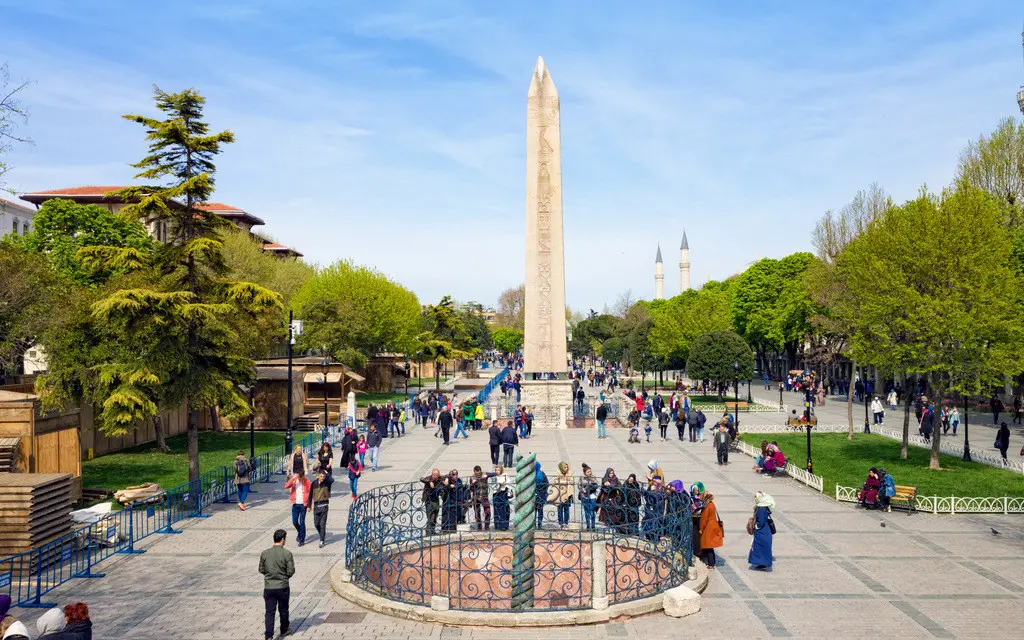The Hippodrome of Constantinople, also known as Atmeydanı (“Horse Square”) in Turkish, was one of the most important public spaces in the ancient city of Constantinople, the capital of the Byzantine Empire. Located in what is now Sultanahmet Square in modern-day Istanbul, Turkey, the Hippodrome served as the center of civic life, entertainment, and political activity for over a millennium.
Constructed by the Roman Emperor Septimius Severus in the early 3rd century CE, the Hippodrome was modeled after the Circus Maximus in Rome and served as a venue for chariot races, athletic competitions, and public spectacles. Spanning approximately 480 meters (1,575 feet) in length and 117 meters (384 feet) in width, the Hippodrome could accommodate tens of thousands of spectators, making it one of the largest stadiums in the ancient world.
The Hippodrome’s most prominent feature was its central spina, or divider, which was adorned with statues, obelisks, and other decorative elements. Among the most famous monuments of the Hippodrome were the Serpent Column, the Obelisk of Thutmose III, and the Obelisk of Constantine VII. These monuments, plundered from ancient sites across the Mediterranean, served as symbols of imperial power and prestige and were often the focus of religious ceremonies and public gatherings.
Throughout its long history, the Hippodrome witnessed numerous historical events and political upheavals. It was the scene of chariot races, riots, and even riots, and the site of many important speeches and proclamations by Byzantine emperors. Perhaps the most famous event associated with the Hippodrome is the Nika Riots of 532 CE, when rival factions of chariot racing fans united in a violent rebellion against the emperor Justinian I.
Following the Ottoman conquest of Constantinople in 1453, the Hippodrome fell into disrepair and was gradually dismantled and built over. Today, only a few remnants of the Hippodrome remain visible, including the Egyptian Obelisk, the Serpent Column, and the German Fountain. These ancient monuments serve as reminders of the Hippodrome’s storied past and its importance in shaping the history and culture of Istanbul.
Despite its reduced size and diminished prominence, the Hippodrome of Constantinople continues to attract visitors from around the world who come to admire its ancient monuments and learn about its rich history. As one of Istanbul’s most significant archaeological sites, the Hippodrome stands as a testament to the enduring legacy of the Byzantine Empire and the cultural heritage of Turkey.



